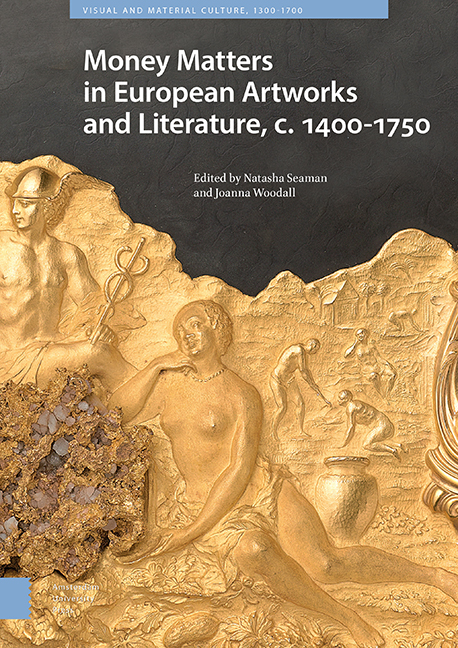8 - Centring the Coin in Jacob Backer’s Woman with a Coin
Published online by Cambridge University Press: 15 September 2022
Summary
Abstract
The Dutch painter Jacob Backer's Woman with a Coin (c. 1636) depicts a smiling prostitute, breasts bared, brandishing a coin. Given the context of the painting, the coin certainly represents a payment. However, the manner in which the woman holds the coin – frontally to display its portrait and centrally in the painting – endows the coin the power of a reagent, stimulating correspondences among the prostitute, the coin, and, reflexively, the painting itself. Each can be seen to refer to each other through a network of metaphorical associations related to the value of their beauty and potential for depreciation, their tendency towards circulation, and the shared qualities of allure.
Keywords: coin, prostitution, painting, paragone, tronies, value
Woman with a Coin (c. 1636) by Jacob Backer (1608-1651) depicts a smiling young woman dressed in green satin, fine linen, and lace proffering a coin near her exposed breasts (fig. 8.1). These features suggest she is a prostitute, an identification corroborated by comparison to paintings such as Gerrit van Honthorst's Procuress (1625), which features a similarly dressed woman, a male customer holding a coin, and an old woman brokering the transaction. Although the format of the painting follows the conventions of a portrait, it is a tronie – the term often used in seventeenthcentury inventories for a head- or bust-length painting of single figure. Tronies give the impression of being painted from life but are understood as character studies rather than portraits of specific individuals. Both the painting type and the subject were popular in Backer's milieu, Amsterdam, in the Dutch Republic in the middle third of the seventeenth century. Backer, trained in Leeuwarden, arrived in Amsterdam in 1633. Although now overshadowed by his contemporary Rembrandt van Rijn (1606-1669), Backer was well regarded in his time, specializing in the high-status genres of portraiture and history painting. His first decade in Amsterdam saw him obtain significant portrait commissions, but these early years of his career were also the period of his greatest production of tronies, which were easily sold on the open market. Of Woman with Coin itself, four additional copies are known, suggesting the popularity of the composition.
- Type
- Chapter
- Information
- Money Matters in European Artworks and Literature, c. 1400-1750 , pp. 227 - 250Publisher: Amsterdam University PressPrint publication year: 2022



